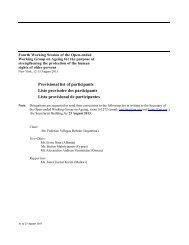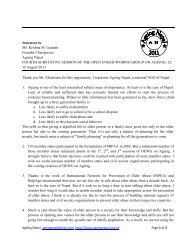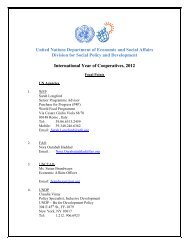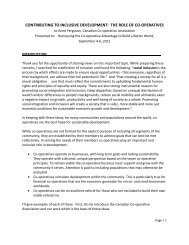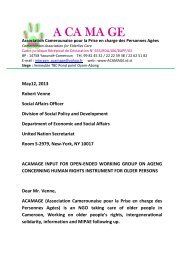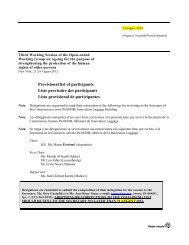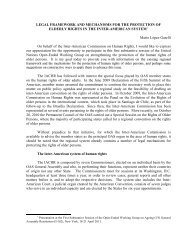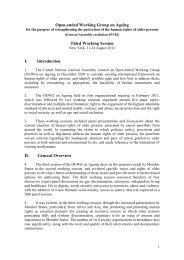Audit of Residential Facilities, Final report - Division for Social Policy ...
Audit of Residential Facilities, Final report - Division for Social Policy ...
Audit of Residential Facilities, Final report - Division for Social Policy ...
Create successful ePaper yourself
Turn your PDF publications into a flip-book with our unique Google optimized e-Paper software.
some senior staff that were black. Staff was unhappy that the DSD did not see this andcomplained that the homes produce trans<strong>for</strong>mation <strong>report</strong>s <strong>for</strong> the DSD where it will reflect thatthere is many black staff in a home but what they don‟t see is that the majority <strong>of</strong> them are at thelowest levels.4.4 StaffingThe required nurse to patient ratio is unfeasible and becoming increasingly difficult to fulfil. Inaddition pr<strong>of</strong>essional staff is also being absorbed by the private sector and homes cannot af<strong>for</strong>dto replace these lost skills. Staff indicated that they are over-worked and underpaid. Manyhomes to not provide a <strong>for</strong>um <strong>for</strong> staff to debrief which means that these feelings are internalisedand present itself in burn-out, depression, lethargy, low work ethic and poor morale. The absence<strong>of</strong> communication channels (such as a workers committee or something similar) probablycontributes to the type <strong>of</strong> cold war or stand-<strong>of</strong>f that exists.On the other hand, there are homes that provide valuable models <strong>of</strong> care and support focusingon regular debriefing, team building, employee <strong>of</strong> the month programmes, wilderness trails; theseare inclusive <strong>of</strong> all staff. The attitude <strong>of</strong> staff in these homes is markedly different from homesthat do not provide some <strong>for</strong>m <strong>of</strong> care and support <strong>for</strong> staff.Caregivers play a crucial role in many homes, and are <strong>of</strong>ten not trained but have the compassionto care <strong>for</strong> older persons. However, their role is <strong>of</strong>ten undermined, they are unappreciated, poorlypaid and not considered as an important component in the home as the pr<strong>of</strong>essional staff. Onehome <strong>report</strong>ed the following:“…The success <strong>of</strong> this home can in part be attributed to the acknowledgment <strong>of</strong> the centrality <strong>of</strong>the caregiver and their praxis that their human resources are the most important asset.Knowledge, skills, attitudes and motivation <strong>of</strong> the caregivers are crucial. A key component <strong>of</strong> theHome there<strong>for</strong>e is the focus on capacity building <strong>of</strong> all staff and, according to the staffdevelopment manager, self awareness, self esteem and the development <strong>of</strong> interpersonal skills<strong>for</strong>m an integral part <strong>of</strong> all aspects <strong>of</strong> training and development. In the words <strong>of</strong> the deputydirector, „We have a high standard <strong>of</strong> care and it comes down to the fact that if you look at thesecaregivers, their own lives are full <strong>of</strong> hardships and yet we expect them to deliver the care to agroup <strong>of</strong> vulnerable old people in a kind and compassionate way. Now if we don‟t actually62 | D S D A u d i t o f R e s i d e n t i a l F a c i l i t i e s



